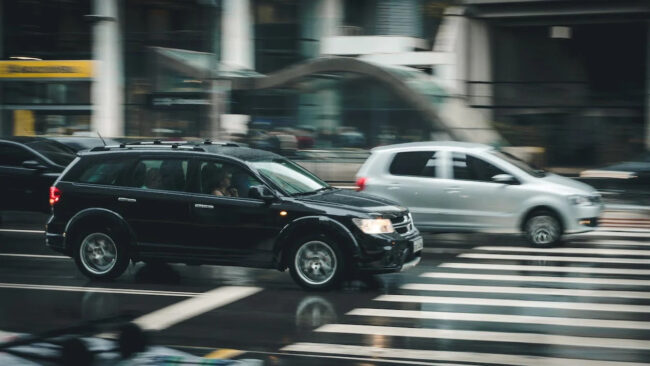
Why you need to divide the number of cars? In the fast-paced urbanized society of today, cities worldwide are grappling with a pressing concern—the ever-growing influx of cars on their roads. The number of people inhabiting urban areas continues to rise. The need for personal transportation also increases, resulting in overcrowded streets, environmental issues, and a range of interconnected problems. Addressing these pressing challenges calls for a fundamental change in how we perceive and manage urban mobility. In this article, we explore why dividing the number of cars through innovative solutions is the key to achieving sustainable and efficient urban transportation systems.
The Urban Mobility Challenge
Why do you need to divide the number of cars? The phenomenon of rapid urbanization has revolutionized our lifestyles and careers, as countless individuals migrate to cities in pursuit of improved prospects. Nonetheless, this surge in urban residents brings forth its own set of challenges, and among the most prominent is the ever-growing volume of cars crowding the streets.
Traffic congestion now plagues daily commuters, resulting in lost time, heightened pollution, and greater fuel consumption. Furthermore, the environmental ramifications of such a large number of cars cannot be ignored. Greenhouse gas emissions from vehicles contribute significantly to air pollution and climate change, endangering both human health and the planet’s delicate ecosystems.

Divide and Conquer: The Solution
The conventional approach to dealing with traffic congestion and environmental concerns has often focused on expanding road infrastructure or promoting public transportation. While these are valuable efforts, it’s time to embrace a more holistic strategy that involves dividing the number of cars on the roads.
Carpooling and Ridesharing
Carpooling and ridesharing initiatives have proven effective in reducing the number of single-occupancy vehicles on the streets. Why do you need to divide the number of cars? – By encouraging individuals to share rides, we can significantly decrease the overall number of cars in circulation during peak hours. Dedicated carpool lanes and incentivized programs can further promote this eco-friendly commuting option.
Enhanced Public Transportation
Investing in and improving public transportation systems is another essential aspect of reducing car dependency. Efficient buses, trams, and trains that connect key areas within a city offer a viable alternative to car ownership, reducing traffic congestion while simultaneously cutting down emissions.
Embracing Micro-mobility Solutions
Micro-mobility solutions, such as shared bicycles and electric scooters, have gained popularity in recent years. These lightweight and eco-friendly options are ideal for short trips within urban areas. They provide commuters with an alternative to driving cars for every minor errand.
Urban Planning for Walkability
Designing cities with walkability in mind can dramatically reduce the need for cars. By creating pedestrian-friendly zones, encouraging mixed-use developments, and promoting compact urban planning, individuals can conveniently access essential amenities without resorting to car usage.

Remote Work and Flexible Schedules
The rise of remote work and flexible schedules can significantly contribute to reducing the number of cars on the road during peak hours. Encouraging companies to offer flexible working arrangements and remote options can lead to a decrease in rush-hour traffic and associated emissions.
Which gadget is the most effective for stopping the mileage recording process?
Introducing the Super Kilometer Filter – the ultimate gadget for halting mileage recording with precision and effectiveness. Originally designed by German manufacturers for testing and fine-tuning, this remarkable device offers an advanced mileage blocker that stops distance accumulation while a vehicle is in motion. Its primary function ensures that no additional miles are added to the original distance, providing unparalleled accuracy.
This cutting-edge system incorporates advanced technologies, guaranteeing that no data is stored in the control units. This ensures absolute confidentiality, making the information untraceable and undiscoverable by anyone. It’s essential to emphasize that the Super Kilometer Filter is not intended for deceitful purposes, although regrettably, some individuals attempt to misuse it.
In controlled environments, this device stands out as one of the finest options for testing performance. Its ability to freeze mileage recording allows for precise assessments, making it a reliable tool for various evaluations. Embrace the Super Kilometer Filter for trustworthy and accurate results, and utilize its potential responsibly.
Takeaway
The time has come for a comprehensive approach to urban mobility that prioritizes sustainability and environmental responsibility. Why you need to divide the number of cars? Dividing the number of cars through innovative measures like carpooling, ridesharing, improved public transportation, micro-mobility solutions, and thoughtful urban planning can alleviate traffic congestion, minimize emissions, and create greener and healthier cities for all. By embracing these strategies, we can pave the way towards a more sustainable and efficient urban transportation system. It’s time to take action and drive our cities towards a cleaner and brighter future.
Latest Posts
- 1
- 2
Is Buying a Car with Over 100k Miles a Good Idea?
April 10, 2024 - 3
Why Are High Mileage Cars So Expensive? – A Guide
April 5, 2024 - 4
Where Is The Mileage Located In A Car?
April 3, 2024 - 5
Whats High Mileage in Vehicles?
March 29, 2024 - 6
What’s The Gas Mileage On A Smart Car: A Comprehensive Guide
March 27, 2024 - 7
At What Mileage Should You Sell Your Car?
March 22, 2024 - 8
Should You Buy a Car with Over 100k Miles?
March 20, 2024 - 9
Should You Buy a Car with 100k Miles?
March 15, 2024 - 10
Understanding ODO Meaning in a Car
March 13, 2024








